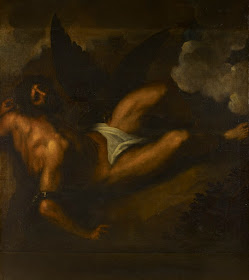 |
| Adam Elsheimer Witch riding backwards on a Goat ca. 1596-98 oil on copper (acquired from an unknown source by Charles I) Royal Collection, Great Britain |
 |
| Jan Provoost Virgin and Child with Saints and Donors ca. 1525 oil on panel (triptych) (purchased by Charles I from the Gonzaga collection in Mantua) Royal Collection, Great Britain |
 |
| Lodewijk Toeput Pleasure Garden with a Maze ca. 1579-84 oil on canvas (purchased in Venice for Robert Carr, Earl of Somerset, and subsequently given to Charles I) Royal Collection, Great Britain |
 |
| follower of Cornelis Massys Landscape ca. 1550 oil on panel (purchased by Charles I from the Gonzaga collection in Mantua) Royal Collection, Great Britain |
 |
| follower of Giulio Romano Abduction of Europa ca. 1550-80 oil on panel (purchased by Charles I from the Gonzaga collection in Mantua) Royal Collection, Great Britain |
 |
| Hans Holbein Portrait of Derich Born 1533 oil on panel (acquired from an unknown source by Charles I) Royal Collection, Great Britain |
 |
| Hans Holbein Portrait of a merchant of the German Steelyard ca. 1532 oil on panel (presented to Charles I by Henry Vane) Royal Collection, Great Britain |
 |
| Hans Holbein Portrait of William Reskimer ca. 1532-33 oil on panel (presented to Charles I by Sir Robert Killigrew) Royal Collection, Great Britain |
 |
| Hans Holbein Miniature portrait of Charles Brandon, later 3rd Duke of Suffolk 1541 watercolor on vellum (presented to Charles I by Sir Henry Fanshawe) Royal Collection, Great Britain |
















































